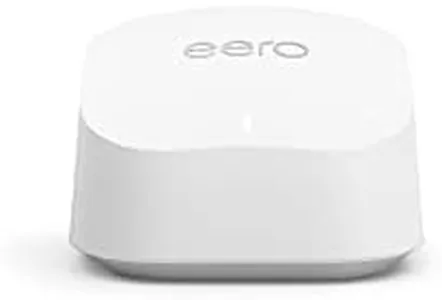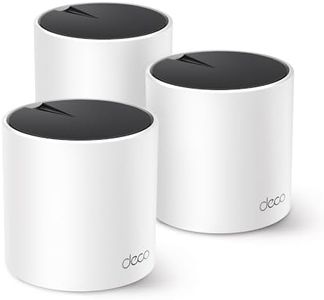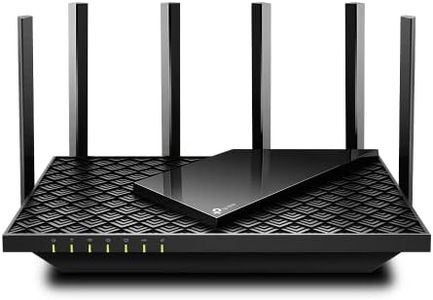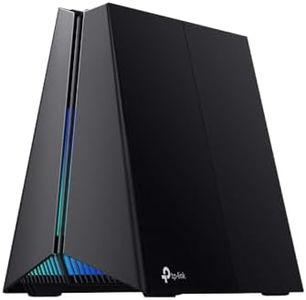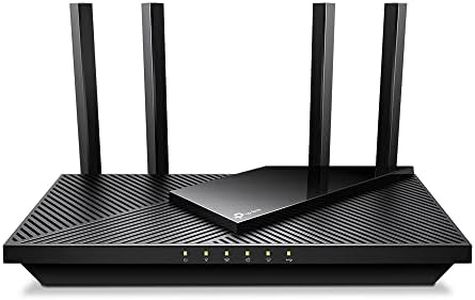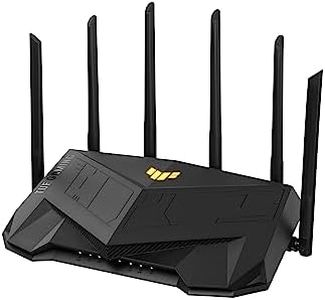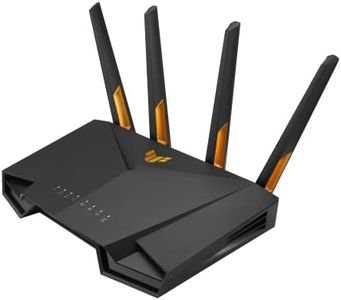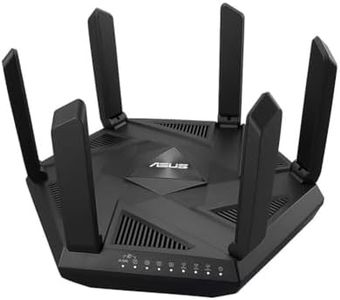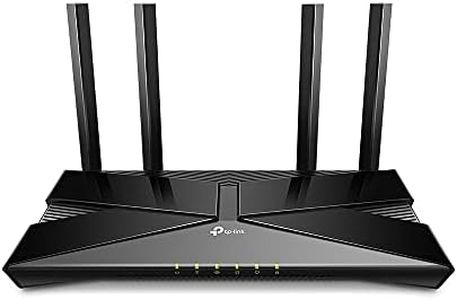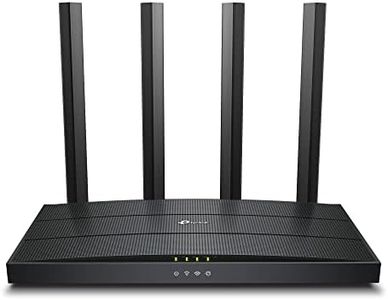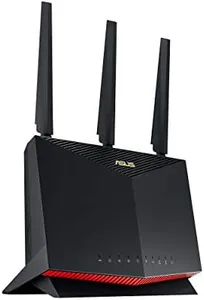We Use CookiesWe use cookies to enhance the security, performance,
functionality and for analytical and promotional activities. By continuing to browse this site you
are agreeing to our privacy policy
10 Best WiFi 6 Routers
From leading brands and best sellers available on the web.Buying Guide for the Best WiFi 6 Routers
Choosing a WiFi 6 router can seem overwhelming with so many options and features on the market. The key is to understand how the main specifications affect your home wireless network and how to match those specs to your needs. Whether you're living in a small apartment or a large multi-story house, focusing on the right features will ensure you get fast, reliable, and secure internet for all your devices.WiFi Standard (802.11ax)WiFi 6, also known as 802.11ax, is the latest major WiFi standard. It improves speed, efficiency, and the ability to handle many devices at once compared to previous versions like WiFi 5 (802.11ac). When picking a router, make sure it clearly says it supports WiFi 6 or 802.11ax, which is important for future-proofing your home and getting the most out of new devices. If most of your devices are new or you're planning to upgrade your tech soon, WiFi 6 is essential. If your devices are mostly older, WiFi 6 will still work but you may not feel the full benefits until you upgrade your other hardware.
Speed Rating (AX1800, AX3000, etc.)WiFi 6 routers are labeled with speed ratings like AX1800, AX3000, and higher; these numbers represent the combined maximum data rates in megabits per second (Mbps) across all bands and antennas. Higher numbers mean the router can handle more data and more devices at once. If you have many users streaming, gaming, or doing video calls, opt for higher ratings (AX3000 and up). For lightweight use like browsing and occasional streaming in a small space, lower ratings are usually fine. Remember, actual speeds also depend on your internet plan.
Number of Bands (Dual-band, Tri-band)WiFi 6 routers often come as dual-band or tri-band devices. Dual-band routers transmit on 2.4GHz and 5GHz, while tri-band adds an extra 5GHz or 6GHz band. More bands allow your network to handle more data and users without slowing down. If your household has many devices or you have smart home setups, tri-band can help reduce congestion and keep things running smoothly. For smaller homes or fewer devices, dual-band is sufficient for most needs.
Coverage AreaCoverage area refers to how much physical space the router can cover with a strong signal. This is usually listed in square feet or as a description (small apartment, large house, etc.). If you live in a large house or one with thick walls, choose a router with a higher coverage rating or consider routers that support features like mesh networking. For a single room or small apartment, nearly any model will provide good coverage.
Number and Type of Ethernet PortsEthernet ports allow you to connect devices directly to the router for a more stable, faster connection. More ports are helpful if you have several devices near the router that need strong and consistent internet, like gaming consoles or desktop computers. Some routers offer faster (2.5Gbps or even 10Gbps) Ethernet ports, which is helpful for high-speed internet plans and super-fast wired devices. Think about how many wired connections you’ll need and what types of devices you want to connect.
Security FeaturesSecurity features refer to the ways the router protects your home network from intruders and malware. Look for support for the newest encryption standard (WPA3), automatic security updates, and features like parental controls or guest networks. If network safety is important to you or you have kids at home, make sure your router offers robust built-in security and easy controls.
Mesh SupportMesh support means that the router can work together with other routers or satellites to create a unified, whole-home WiFi system. This is useful if you have a large or multi-story home with WiFi dead zones. If you want seamless WiFi as you move from room to room, or might need to expand your network in the future, choose a router that supports mesh networking. For smaller homes, mesh is less necessary.
Ease of Setup and ManagementEase of setup and management refers to how straightforward it is to install and control your router. Many WiFi 6 routers offer simple smartphone apps that guide you through the setup and allow for easy changes, updates, and monitoring. If you're not very tech-savvy or want to avoid complicated menus, look for routers praised for user-friendly apps and clear instructions.
